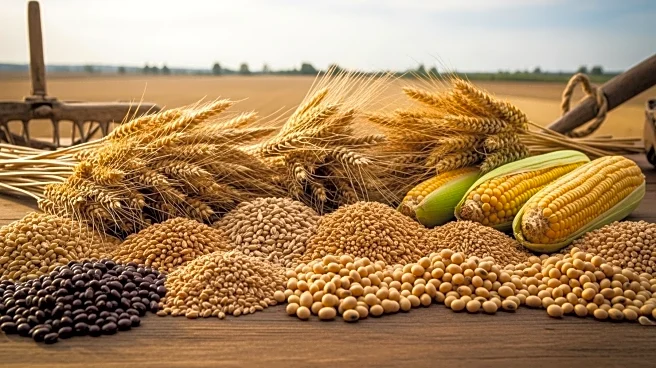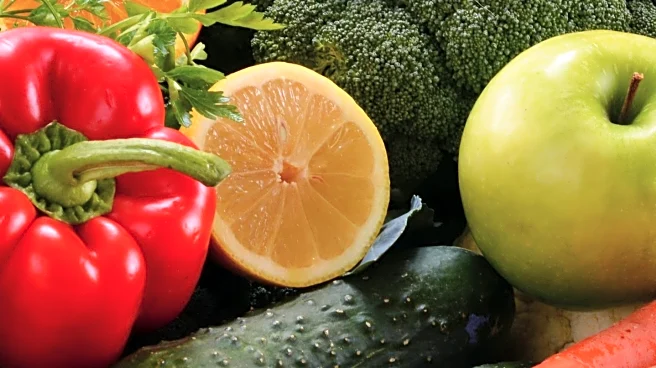What's Happening?
On August 26, 2025, the grain markets closed with mixed results. December corn ended the day down 2¾¢ at $4.09½ per bushel, while November soybeans closed up 1¾¢ at $10.49½ per bushel. Wheat prices also showed mixed results, with December CBOT wheat up 2¢ and December KC wheat down 3¢. Livestock futures, however, were solidly higher, driven by hopes of elevated export demand and ongoing reductions in U.S. red meat stocks. Despite strong condition ratings, disease pressure remains a concern for crops, with reports of southern rust and other diseases becoming more frequent.
Why It's Important?
The mixed closing in grain markets reflects the complex dynamics of agricultural commodities, where disease pressures and export demand play significant roles. The resilience of crops despite disease concerns suggests potential stability in supply, but the ongoing issues highlight the need for vigilance in crop management. The rise in livestock futures indicates strong export demand, which could benefit U.S. meat producers but also poses challenges in maintaining domestic supply levels. These market movements are crucial for farmers and traders as they navigate pricing strategies and supply chain decisions.
What's Next?
As the harvest season approaches, market participants will closely monitor disease developments and export trends. The potential for a price rally exists if disease pressures intensify or if export demand continues to rise. Farmers and traders may need to adjust their strategies accordingly, balancing the risks of holding onto crops versus selling at current prices. The livestock market will also be watched for changes in export demand and domestic supply levels, which could influence future pricing and production decisions.











